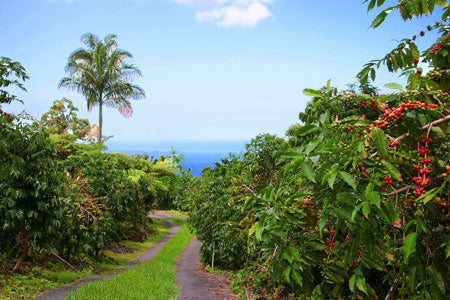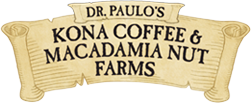
Is Kona Coffee Worth It?
Share
Is coffee from Hawaii some of the best, is Kona coffee worth it, or is it simply overrated? Some coffees are remarkably known as the cream of the crop. Most often, this has nothing to do with the actual beans themselves but more with the urban legends and marketing. In fact, Kona Coffee, peaberry, and Jamaica Blue Mountain are just some of them.
However, it does not mean that the coffee from Hawaii is a scam. It’s just that it is essential that you know what you are looking for so you will not be wasting your money. Here, we are going to provide you with everything that you need to know about the legendary Kona Coffee.
Somehow, the success of coffee beans is somewhat related to its exemplary marketing. And let’s not forget that when it comes to coffee production, Kona Coffee or coffee from Hawaii has several advantages. For instance, Kona has the perfect weather for growing coffee. Also, most coffee beans can be found on the slopes of Mauna Loa and Hualalai volcanoes which is advantageous due to its rich, volcanic soil that is filled with lots of minerals.
Additionally, since adequate skill and knowledge are needed in processing the coffee beans, having a higher educational level is beneficial.
Nevertheless, it is undeniable that Kona Coffee is still just as excellent as it was way back in the early days when the hype has just started. However, there is high competition worldwide. That is why the Hawaiian coffee industry decided to create cheaper alternatives to Kona Coffee.
Today, grocery stores are selling Kona Blends that only comprised 10% Hawaiian coffee combined with other Arabica beans. Unfortunately, this is not helping the Kona brand.

Keep in mind that coffee production is labor intensive, and most of the processes are done by hand. Compared to the U.S., the labor costs in Africa and Latin America are much cheaper. Another factor is the location. Kona Coffee is grown on the highest active volcano located on an island.
Ideally, this is not the best place to ship the coffee from. An ocean barge will be used for the shipment. Due to the conditions of the location, harvesting machines are not used. This means that everything has to be accomplished by hand. For instance, workers have to pick the coffee beans by hand.
The size of the Kona Coffee Belt is small and is approximately a mile wide and 30 miles long. Coffee grown in this area is considered 100% Kona coffee. Because it is only a small area, the coffee that can be produced is also small. Only approximately 1% of the world’s coffee is considered Kona Coffee.
Kona Coffee originated from the Arabica species. In other words, you can enjoy the mild and distinct flavor, provided that the coffee is properly grown and accurately processed. Although the Kona Coffee Belt is a bit small, it is a prime area for growing coffee in Kona. The coffee belt has elevations that range from 500 feet to 2,500 feet. Coffee is grown on the fertile slopes of the Hualalai and Mauna Loa volcanoes.
Samuel Ruggles brought the coffee plant to Kona in 1828. Fortunately, it flourished, and between 1850 and 1880, the Kona coffee industry prospered dramatically. During this time, there were many plantations were established, and most of them are still operating today.
During the early years, Kona coffee farmers were mostly Japanese immigrants. In fact, it is true even today that most Kona coffee farmers are commonly fifth-generation descendants. Nowadays, there are about 700 Kona coffee farms that exist, and many of them are family-owned. Also, coffee tasting and farm tours are being offered by these Kona coffee farms.

These cherries consist of several seeds within, also referred to as coffee beans. These cherries will be hand-picked from the plants. A machine does not do this because not all cherries ripen simultaneously, even on one plant. A sharp human eye will be required to pick the right fruit.
Coffee cherries will be chosen depending on their size, color, and firmness. A machine will remove its flesh and pulp, so the coffee beans will remain. These coffee beans will then be fermented between 12 and 24 hours. Afterwards, the beans will be washed in fresh water. Then the beans will be dried up in the sun. They should be evenly spread, ensuring that their moisture levels are between 9% and 12.2%.
If you are looking for Kona Coffee, you can find them at Dr. Paulo’s Kona Coffee and Macadamia Nut Farms. Just contact us at 808-333-1959 or 800-873-6693. You can also send us an email at drpaulosfarms@gmail.com.
However, it does not mean that the coffee from Hawaii is a scam. It’s just that it is essential that you know what you are looking for so you will not be wasting your money. Here, we are going to provide you with everything that you need to know about the legendary Kona Coffee.
Why is Kona Coffee So Special?
Generally, coffee from Hawaii, particularly, Kona Coffee has always been considered special by most American consumers. This is because, in American minds, Hawaii is a special place. Traditionally, Kona beans are known as premium coffee beans.Somehow, the success of coffee beans is somewhat related to its exemplary marketing. And let’s not forget that when it comes to coffee production, Kona Coffee or coffee from Hawaii has several advantages. For instance, Kona has the perfect weather for growing coffee. Also, most coffee beans can be found on the slopes of Mauna Loa and Hualalai volcanoes which is advantageous due to its rich, volcanic soil that is filled with lots of minerals.
Additionally, since adequate skill and knowledge are needed in processing the coffee beans, having a higher educational level is beneficial.
Is It Worth It to Buy Kona Coffee?
In some places in the world, coffee is undervalued due to its ample production and cheap labor in the developing world. However, what makes Kona coffee exceptional is that Americans are the ones who grow and harvest them. This means that the labor is a bit expensive. Additionally, the minimum wage laws are applied in the US.Nevertheless, it is undeniable that Kona Coffee is still just as excellent as it was way back in the early days when the hype has just started. However, there is high competition worldwide. That is why the Hawaiian coffee industry decided to create cheaper alternatives to Kona Coffee.
Today, grocery stores are selling Kona Blends that only comprised 10% Hawaiian coffee combined with other Arabica beans. Unfortunately, this is not helping the Kona brand.

Why is Kona Coffee Expensive?
Keep in mind that coffee production is labor intensive, and most of the processes are done by hand. Compared to the U.S., the labor costs in Africa and Latin America are much cheaper. Another factor is the location. Kona Coffee is grown on the highest active volcano located on an island.
Ideally, this is not the best place to ship the coffee from. An ocean barge will be used for the shipment. Due to the conditions of the location, harvesting machines are not used. This means that everything has to be accomplished by hand. For instance, workers have to pick the coffee beans by hand.
The size of the Kona Coffee Belt is small and is approximately a mile wide and 30 miles long. Coffee grown in this area is considered 100% Kona coffee. Because it is only a small area, the coffee that can be produced is also small. Only approximately 1% of the world’s coffee is considered Kona Coffee.
Kona Coffee originated from the Arabica species. In other words, you can enjoy the mild and distinct flavor, provided that the coffee is properly grown and accurately processed. Although the Kona Coffee Belt is a bit small, it is a prime area for growing coffee in Kona. The coffee belt has elevations that range from 500 feet to 2,500 feet. Coffee is grown on the fertile slopes of the Hualalai and Mauna Loa volcanoes.
History of Kona Coffee
It all started in 1823 when the king of Hawaii, Kamehameha II, took a trip to England together with Chief Boki, the governor of Oahu. Sadly, during his travel, the king was infected with measles and died before he even got the chance to return to the island. While on his way home, Chief Boki took some coffee plants in Brazil and brought them back to Hawaii.Samuel Ruggles brought the coffee plant to Kona in 1828. Fortunately, it flourished, and between 1850 and 1880, the Kona coffee industry prospered dramatically. During this time, there were many plantations were established, and most of them are still operating today.
During the early years, Kona coffee farmers were mostly Japanese immigrants. In fact, it is true even today that most Kona coffee farmers are commonly fifth-generation descendants. Nowadays, there are about 700 Kona coffee farms that exist, and many of them are family-owned. Also, coffee tasting and farm tours are being offered by these Kona coffee farms.

How Much Kona Coffee is Produced Every Year?
Until 2007, the volume of unroasted coffee beans generated each year was up to three million pounds. Approximately 2.4 million pounds of unroasted coffee beans were generated annually between 2013 and 2014. This is because most Kona coffee crops are mixed with other coffee beans, which caused its decline. Every year, approximately 20 million pounds of coffee labeled as Kona Coffee were sold. Although most of these are showcased as Hawaiian Kona Blend Coffee.How Are They Harvested and Processed?
Typically, coffee berries are also known as cherries since they turn red when they become ripe.These cherries consist of several seeds within, also referred to as coffee beans. These cherries will be hand-picked from the plants. A machine does not do this because not all cherries ripen simultaneously, even on one plant. A sharp human eye will be required to pick the right fruit.
Coffee cherries will be chosen depending on their size, color, and firmness. A machine will remove its flesh and pulp, so the coffee beans will remain. These coffee beans will then be fermented between 12 and 24 hours. Afterwards, the beans will be washed in fresh water. Then the beans will be dried up in the sun. They should be evenly spread, ensuring that their moisture levels are between 9% and 12.2%.
What is the Flavor of a Hawaii Coffee?
Surprisingly, Kona coffee has a simplem yet rich flavor. It has a delicate and light flavor along with an intricate aroma. Premium Kona coffee has a pure and well-balanced flavor blended with a moderate body and brilliance through acidity. But most often, it has buttery and spicy flavors along with subtle wine tones and is extremely aromatic with an outstanding finish.What are the Grades of Kona Coffee?
Type I Kona coffee beans of primary grades are classified as extra fancy, fancy, Kona #1, and Prime. The highest grade is extra fancy, and the lowest grade is prime. Hawaii Kona Peaberry Coffees belong to Type II. Consequently, they are also categorized into sections and graded accordingly.If you are looking for Kona Coffee, you can find them at Dr. Paulo’s Kona Coffee and Macadamia Nut Farms. Just contact us at 808-333-1959 or 800-873-6693. You can also send us an email at drpaulosfarms@gmail.com.
